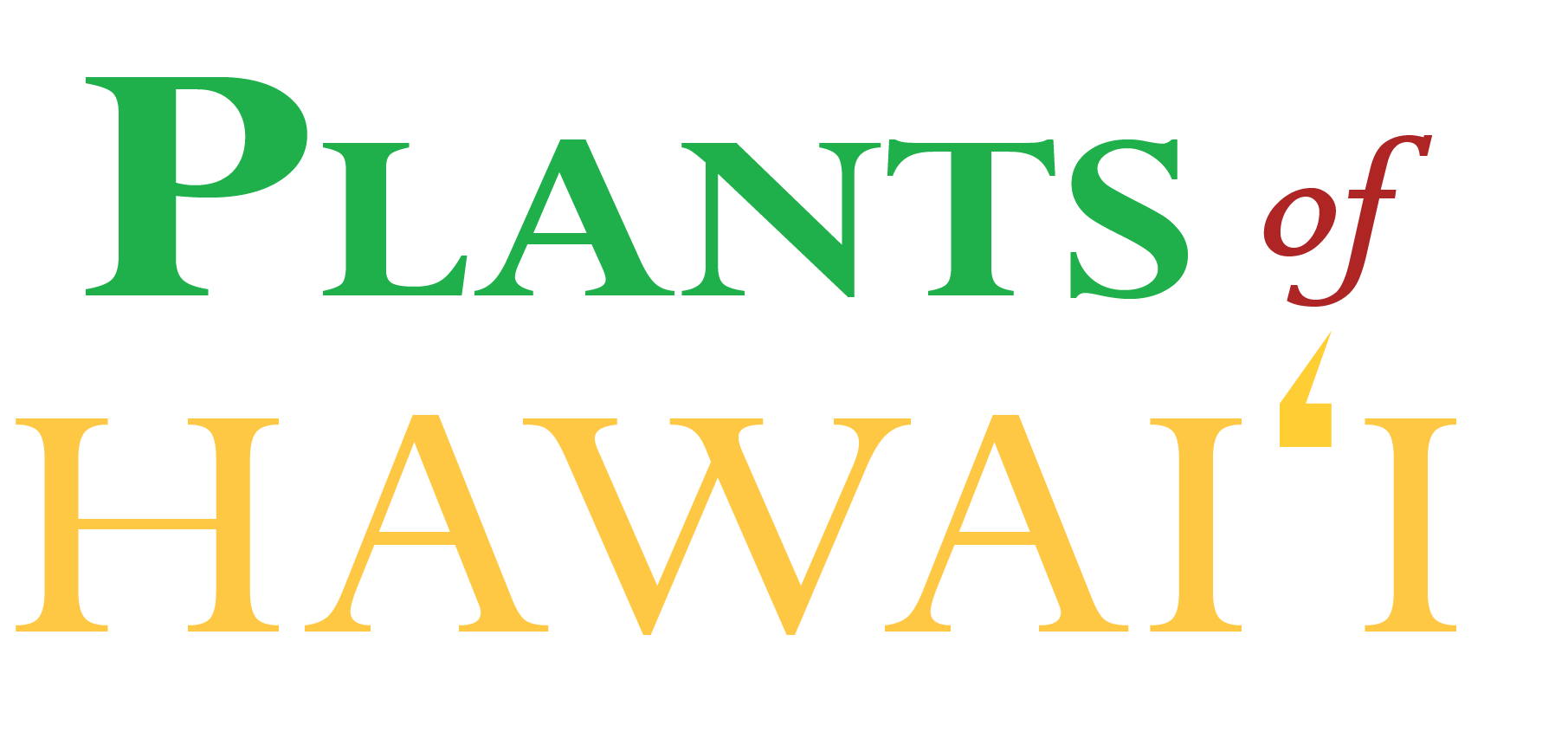
Key Characters:
Growth Form:
Stems:
Roots:
Leaves:
Sori:
Gametophyte:
Ploidy:
Habitat:
Elevation Range:
Fronds for final thatching of hale (building) (Abbott 1992:70). Leafstalks beaten & used as sizing (with bark) in kapa making, fronds for mulch, starchy inner part of the trunk cooked and eaten in times of famine, young leaves cooked & eaten also, red dye for kapa from the trunk fibers (Little & Skolmen 1989:50).
Red dye from young fronds
Used as a treatment for hano makani and hano male. The ‘ama‘u is mixed with ‘uhaloa (Waltheria indica), kukui bark (Aleurites moluccana), ‘uala mohihi (sweet potato variety, Ipomoea batatas), and kōkea (white sugarcane, Saccharum officinarum). For kohe popo the shoots are with the stems and flowers of the ‘ala‘ala wai nui pehu (Peperomia spp.) and ‘ala‘ala wai nui pohina (Plectranthus parviflorus), ‘ohi‘a leahu leaf buds (Metrosideros spp.), noni fruits (Morinda citrifolia), and kōkea. In addition, ‘ama‘u shoots are used with kukui nuts and bark, and salt to bind and drain boils, sores, or pimples (Chun 1994:44–46).
[I] Huli ka lau o ka ‘ama‘u i uka, nui ka wai o kahawai. When the leaves of the ‘ama‘u turn toward the upland, it is a sign of a flood. When the wind blows the leaves of the ‘ama‘u fern so that they bend toward the mountains it is also blowing clouds inland, which will produce rain. [II] Pepe‘e palaholo. A rolled-up frond—paste for kapa cloth. Said of the ‘ama‘u fern, which furnishes sap used in tapa-making. Implies the same thought as the saying "Great oaks from little acorns grow."
Endemic
Laukahi: The Hawai'i Plant Conservation Network:Species of Conservation Importance
Name Published In: Enum. Filic.: 162 (1824)
Other References
Palmer 2003:231 (K, O, Mo, L, M, H); Staples & Herbst 2005:31 (DESCR)
| SNo. | Scientific Name | Locality | Habitat | Basis of Record | Recorded By | Record Number | Island | Source | Date |
|---|

Lorem ipsum dolor sit amet, consectetur adipiscing elit, sed do eiusmod tempor incididunt ut labore et dolore magna aliqua. Ut enim ad minim veniam, quis nostrud exercitation ullamco laboris nisi ut aliquip ex ea commodo consequat. Duis aute irure dolor in reprehenderit in voluptate velit esse cillum dolore eu fugiat nulla pariatur. Excepteur sint occaecat cupidatat non proident, sunt in culpa qui officia deserunt mollit anim id est laborum.

Lorem ipsum dolor sit amet, consectetur adipiscing elit, sed do eiusmod tempor incididunt ut labore et dolore magna aliqua. Ut enim ad minim veniam, quis nostrud exercitation ullamco laboris nisi ut aliquip ex ea commodo consequat. Duis aute irure dolor in reprehenderit in voluptate velit esse cillum dolore eu fugiat nulla pariatur. Excepteur sint occaecat cupidatat non proident, sunt in culpa qui officia deserunt mollit anim id est laborum.

Lorem ipsum dolor sit amet, consectetur adipiscing elit, sed do eiusmod tempor incididunt ut labore et dolore magna aliqua. Ut enim ad minim veniam, quis nostrud exercitation ullamco laboris nisi ut aliquip ex ea commodo consequat. Duis aute irure dolor in reprehenderit in voluptate velit esse cillum dolore eu fugiat nulla pariatur. Excepteur sint occaecat cupidatat non proident, sunt in culpa qui officia deserunt mollit anim id est laborum.

Lorem ipsum dolor sit amet, consectetur adipiscing elit, sed do eiusmod tempor incididunt ut labore et dolore magna aliqua. Ut enim ad minim veniam, quis nostrud exercitation ullamco laboris nisi ut aliquip ex ea commodo consequat. Duis aute irure dolor in reprehenderit in voluptate velit esse cillum dolore eu fugiat nulla pariatur. Excepteur sint occaecat cupidatat non proident, sunt in culpa qui officia deserunt mollit anim id est laborum.

Lorem ipsum dolor sit amet, consectetur adipiscing elit, sed do eiusmod tempor incididunt ut labore et dolore magna aliqua. Ut enim ad minim veniam, quis nostrud exercitation ullamco laboris nisi ut aliquip ex ea commodo consequat. Duis aute irure dolor in reprehenderit in voluptate velit esse cillum dolore eu fugiat nulla pariatur. Excepteur sint occaecat cupidatat non proident, sunt in culpa qui officia deserunt mollit anim id est laborum.

Lorem ipsum dolor sit amet, consectetur adipiscing elit, sed do eiusmod tempor incididunt ut labore et dolore magna aliqua. Ut enim ad minim veniam, quis nostrud exercitation ullamco laboris nisi ut aliquip ex ea commodo consequat. Duis aute irure dolor in reprehenderit in voluptate velit esse cillum dolore eu fugiat nulla pariatur. Excepteur sint occaecat cupidatat non proident, sunt in culpa qui officia deserunt mollit anim id est laborum.
Thank you for your interest in submitting an image of
Select your image and leave a brief description of your photo below.


